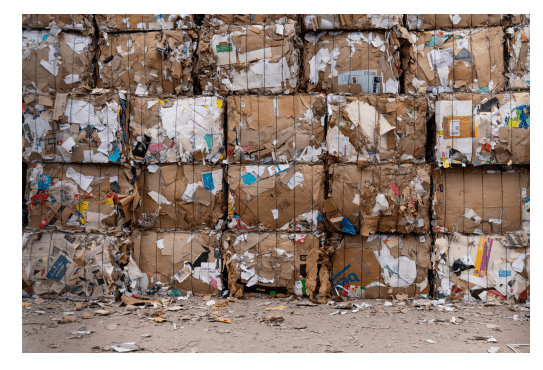Recycling: Paper and Cardboard

A Closer Look at Paper Recycling
Did you know that 80% of U.S. paper mills use at least some recycled paper to make new products? In 2021, the paper recycling rate was 68% and nearly half of that went into making cardboard boxes. Recycled paper is used for toilet paper, paper towels, writing paper and newspaper.
When paper is recycled, it is sorted and baled, then sent off to a paper mill. Paper can be recycled approx. 5 – 7 times before it is no longer able to be broken down again. The paper is put into a pulper, where water and other additives are included, then churned and broken down in to paper pulp. This pulp is then screened again, flattened and dried out. The dried pulp is then turned into the next product.
Each metric ton of paper recycled can save approximately 19 trees a year, 396 gallons of oil, 7,660 gallons of water and 4400 kilowatts of energy!
What types of paper are recyclable? Writing paper, notebooks (you can leave the metal spiral in but if it has a plastic cover, please remove and those that away), newspaper, magazines, catalogs, phone books, paperboard boxes, office paper, receipts, envelopes, and some food boxes. Please just make sure there is no grease / food waste on anything, that will contaminate the paper and render it unusable. The same goes for glitter, glue, metallic strips (think fancy wrapping paper); these additions render the paper un-recyclable.
A Closer Look at Cardboard Recycling
For cardboard boxes, the cardboard in the recycling bin should be clean, not contaminated with any food waste, plastic or non-cardboard material. Cardboard, like pizza boxes and takeout containers, that have grease and cheese in them should go into the trash. The grease in these boxes easily transfers to other cardboard and paper products in the container, especially if they get a bit damp. The grease makes all of the cardboard and paper contaminated and unrecyclable.
Cardboard should be broken down flat, or as flat as possible. If the box is very large, you may need to cut it down to be a manageable size. If you have extra cardboard that does not fit in your recycling container, you may flatten and bundle the cardboard and place it next to the can. The reason behind this is simple, broken down boxes take up a lot less space inside the can and the truck! More cardboard can be collected when all the boxes are flattened. A good tip, if it is going to rain, hold off on placing the cardboard outside of the can. As a reminder, just like with paper, the cardboard should also be free from food, grease, and glitter.
For more information, check out the below links:
Paper Recycling